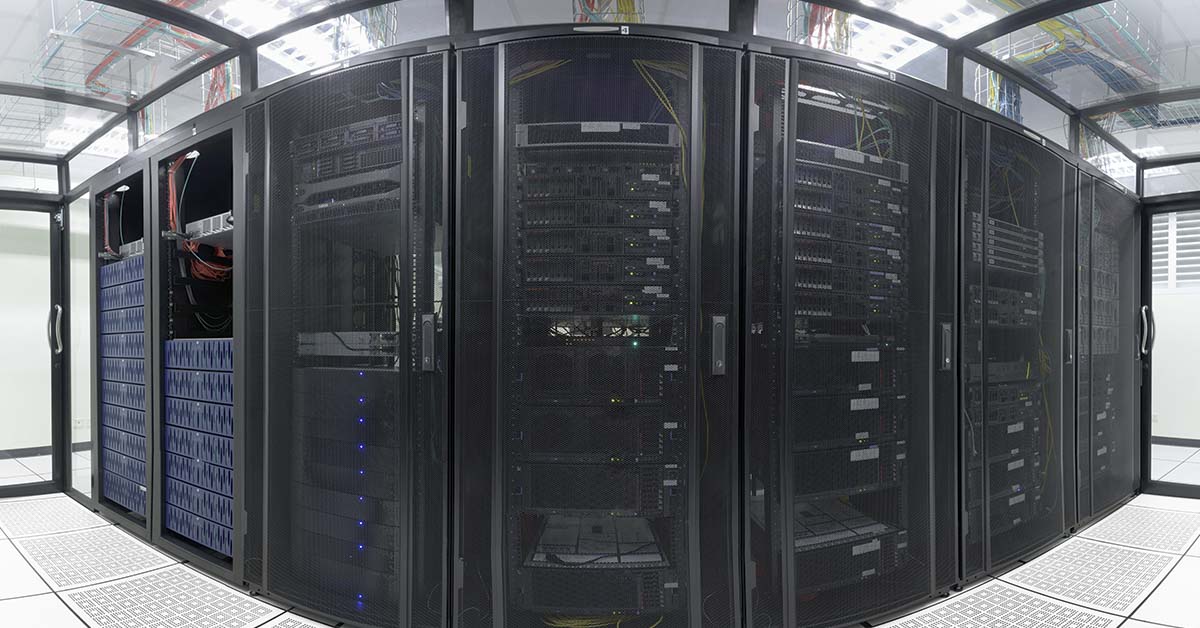Researchers in Australia have created a supercomputer with an algorithm that predicts serious brain bleeds in patients before they happen. This program can save many lives. Brain bleeds, also known as intracranial hemorrhages, can result in brain damage and death. The outcomes can depend on the location and severity of the bleed, but it also depends on how long it takes to receive treatment. Brain bleeds tend to occur suddenly (although some take days to weeks to develop) and time is critical. [1] So Shiv Meka, Royal Perth Hospital head of data science, and his team embarked on building a computer to predict these emergencies.
The Supercomputer That Will Save Lives
Meka and his team collected over 40,000 hours of patient data from 200 patients at the Royal Perth Hospital, Royal Melbourne Hospital, and the Alfred Hospital. They compiled all of this information to develop the algorithm. They worked on 20 different data models until they created one that warned medical personnel about a potential brain bleed up to 20 minutes before it occurs in patients with traumatic brain injuries.
“So you make sense of this data, and then you train the model to predict an event,” Meka said. “And based off that, the doctor makes a decision whether this is a high-risk patient and if they have to intervene. The only way that this could have happened is because of Pawsey, if we used the cloud [storage], we would have burned a big hole in our budget.” [2]
The Pawsey Centre’s Setonix supercomputer was ideal for this algorithm. It was ranked the 15th most powerful research supercomputer in the world, and the Pawsey Supercomputing Center holds the powerful system used in Australia. The national facility is located in Perth, although it supports researchers across the continent in areas like health, mining, agriculture, climate change, renewable energy, engineering, and radio astronomy.
“Setonix will give Australian researchers the computing power and infrastructure, supported by our expert staff, to discover new galaxies, develop new medicines, create new battery technologies, and better understand our universe,” said Pawsey Supercomputing Research Centre executive director Mark Stickells. “It will unlock the scientific knowledge needed to support Australia’s standing in global academia and commercial success.” [3]
Saving Patients With Brain Bleeds
That is definitely the case for the algorithm at the Royal Perth Hospital, where Robert McNamara, an intensive care specialist, says the research could drastically improve the treatment of brain injuries. “Across Australia, there are about 2,000 severe traumatic brain injuries a year. In Royal Perth [Hospital], we’ll see about 60 to 80 of these types of patients,” Dr. McNamara said. “About half of those patients will have a bad outcome, they will either die or be severely disabled because of their injury, which led to a re-evaluation of how we actually managed brain injury in the intensive care unit.”
He explained that medical staff are commonly caught off-guard when such a scenario occurs. “You can be sitting in intensive care looking at some of the [brain] pressure that’s in the safe zone and with very little warning, or sometimes no warning at all, suddenly that patient’s pressures are in unsafe levels.” When brain bleeds occur, sometimes a few minutes could make the difference of whether the patient lives or dies.
Patients with a head injury could have symptoms of a brain bleed immediately or even weeks later. Signs include worsening headaches, confusion, dizziness, confusion, drowsiness, and unequal pupil size. Progressed symptoms involve lethargy, unconsciousness, and seizures. Immediate medical attention is required when experiencing any of these symptoms after a blow to the head.
Keep in mind, a serious brain injury could be present even when there’s no bruise or obvious damage. Long-term effects of such an injury could include vision loss, seizures, paralysis, confusion, personality changes, emotional problems, and difficulty with speaking and comprehension. Although rehabilitation could help recover some lost functions, the timing of the treatment could make the different whether a patient dies, lives with impairments, or recovers completely. [4]
Advances in Medical Science
The researchers use the new software to examine every patient’s “heartbeat, vital sign, and pressure wave“. This information helped create the world’s first operational traumatic intracranial hypertension prediction algorithm, a success after many others tried and failed. “For the first time we’re actually going to be able to intervene before it happens,” Dr. McNamara said.
Stickells said this project demonstrates how advances in computers and data science could save lives. “We’re like a laboratory that uses a computer as its main tool,” he said. “We do amazing science at the level of the universe with astronomers using advanced telescopes, developing insights into our universe — but this is right down to human scale. Increasingly, medical science has been informed by advances in computing, machine learning and artificial intelligence.”
Sources
- “Brain Bleed, Hemorrhage (Intracranial Hemorrhage).” Cleveland Clinic. May 4, 2020
- “Perth Pawsey supercomputer predicts ICU patient outcomes before they worsen.” ABC News. Kate Leaver. December 14, 2022
- “The Perth suburb housing one of the world’s most powerful supercomputers.” Perth Now. Michael Palmer. November 23, 2022
- “Intracranial hematoma.” Mayo Clinic. June 17, 2022

